
How to Use sim800c development board: Examples, Pinouts, and Specs
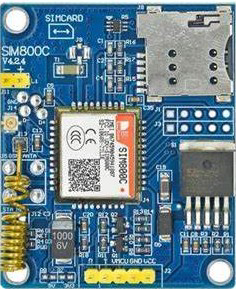
 Design with sim800c development board in Cirkit Designer
Design with sim800c development board in Cirkit DesignerIntroduction
The SIM800C Development Board is a compact GSM/GPRS module designed for mobile communication. It enables functionalities such as SMS, voice calls, and data transmission over cellular networks. This module is widely used in IoT applications, remote monitoring systems, and embedded projects requiring cellular connectivity. Its small size, low power consumption, and versatile features make it an excellent choice for developers and hobbyists alike.
Explore Projects Built with sim800c development board
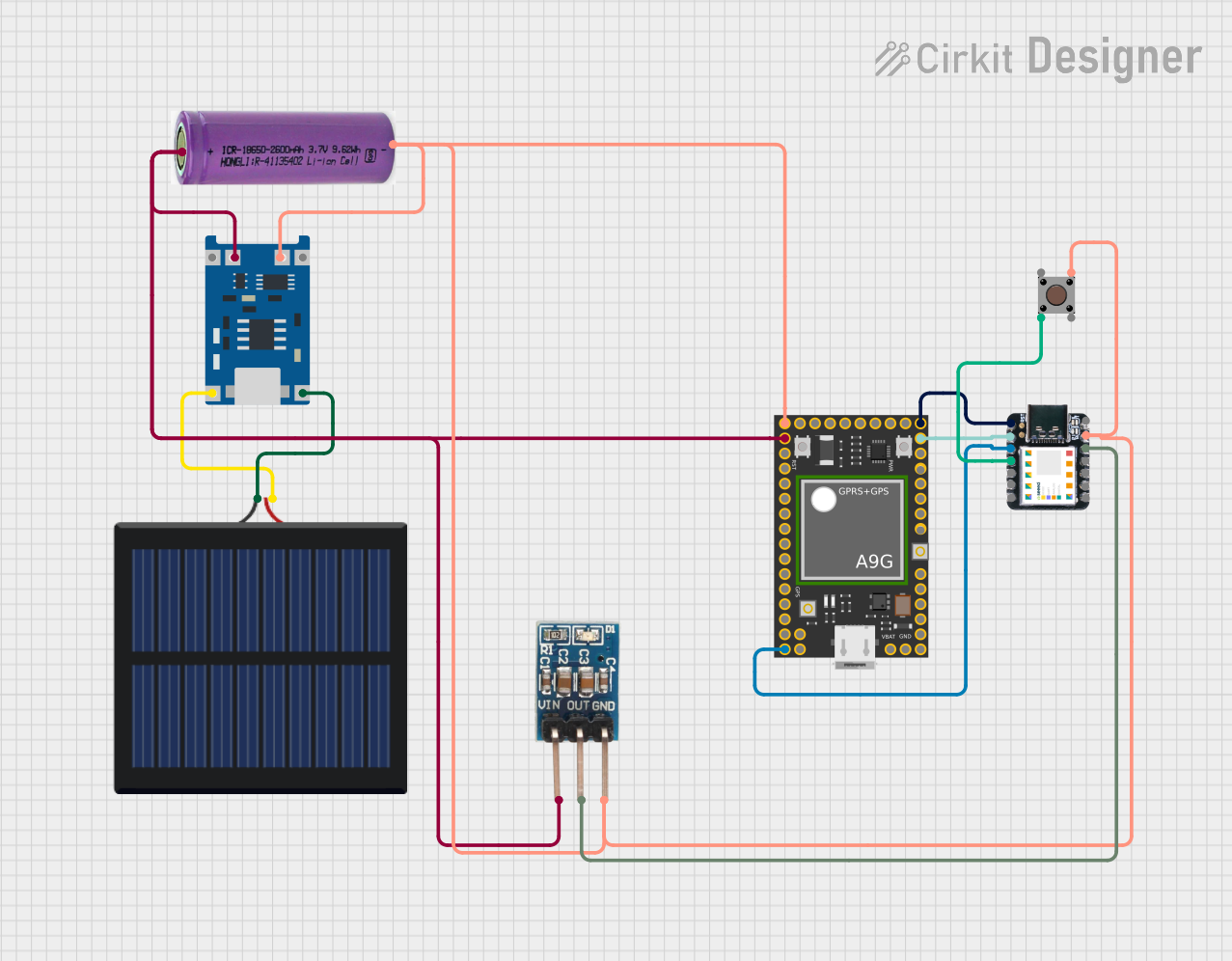
 Open Project in Cirkit Designer
Open Project in Cirkit Designer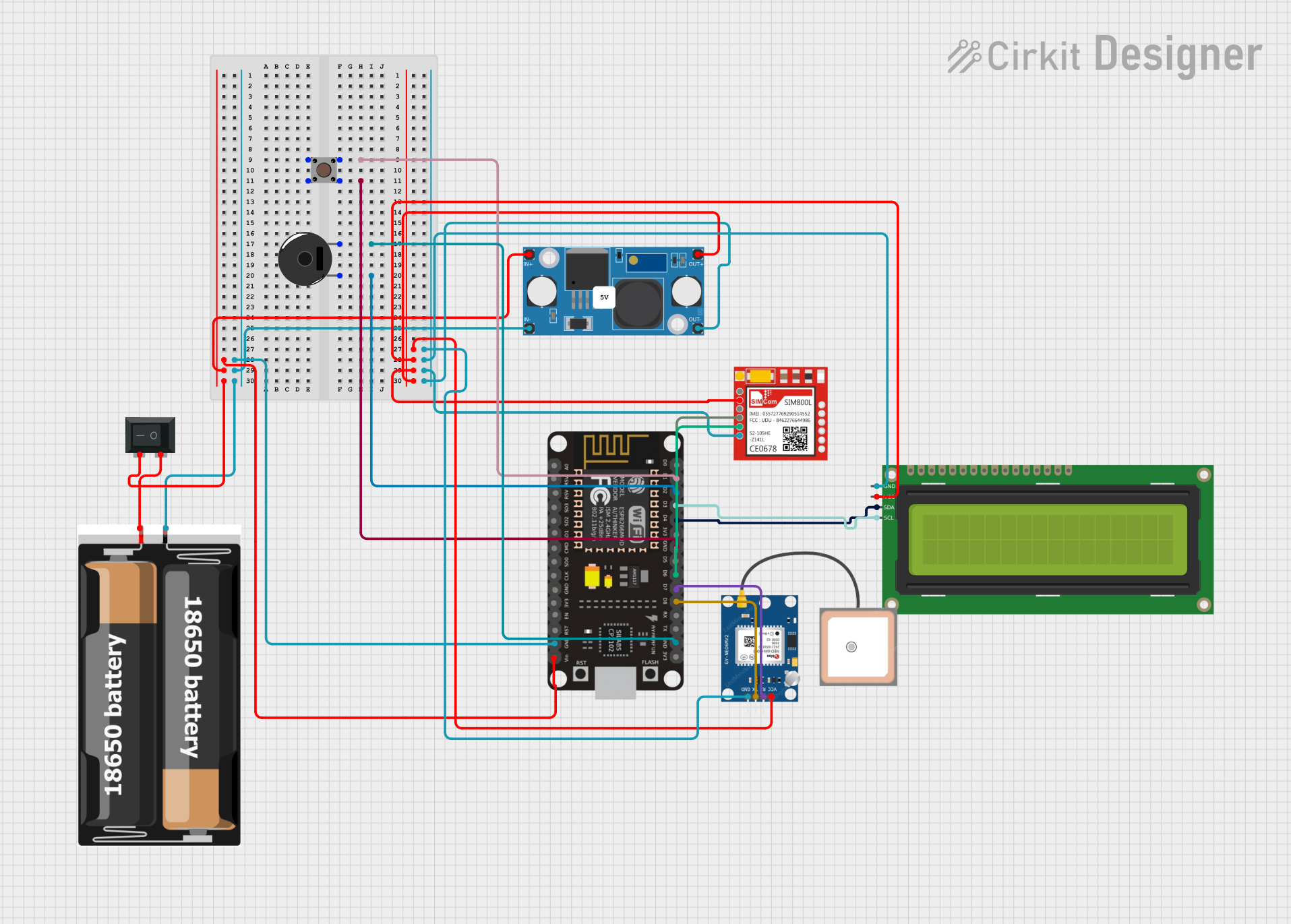
 Open Project in Cirkit Designer
Open Project in Cirkit Designer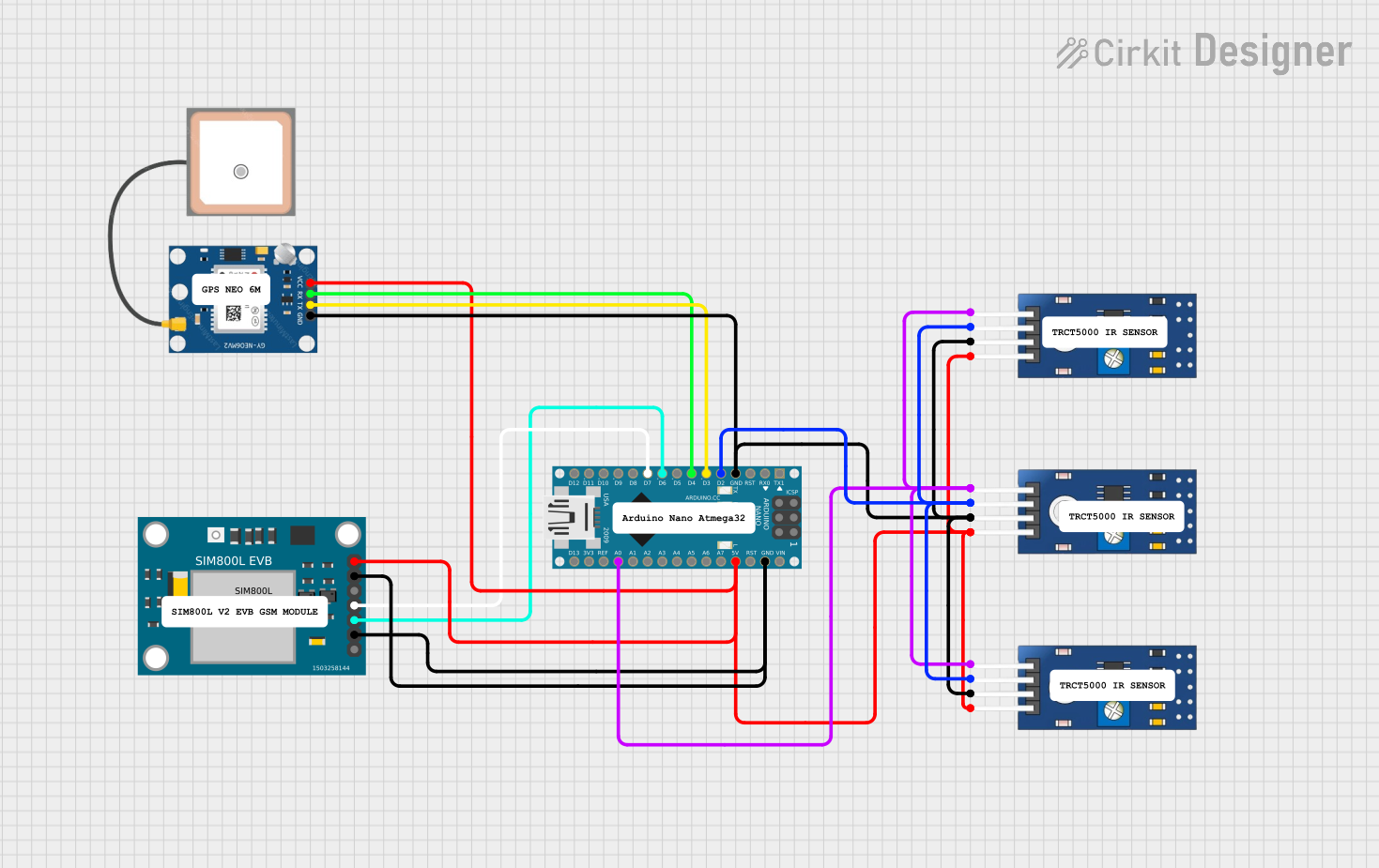
 Open Project in Cirkit Designer
Open Project in Cirkit Designer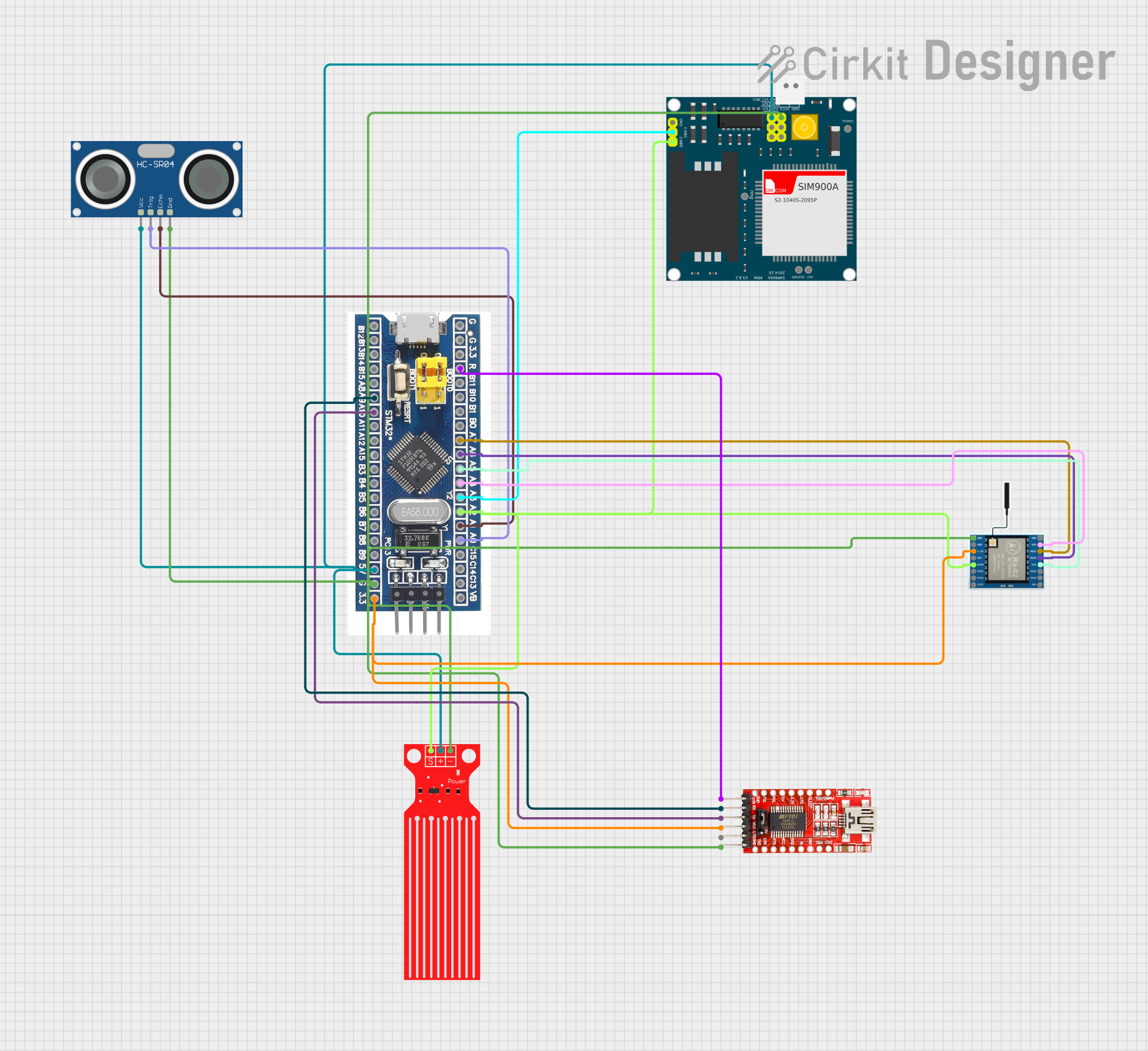
 Open Project in Cirkit Designer
Open Project in Cirkit DesignerExplore Projects Built with sim800c development board

 Open Project in Cirkit Designer
Open Project in Cirkit Designer
 Open Project in Cirkit Designer
Open Project in Cirkit Designer
 Open Project in Cirkit Designer
Open Project in Cirkit Designer
 Open Project in Cirkit Designer
Open Project in Cirkit DesignerCommon Applications and Use Cases
- IoT devices requiring cellular connectivity
- Remote monitoring and control systems
- SMS-based alert systems
- GPS tracking and navigation (when paired with a GPS module)
- Voice call-enabled embedded systems
- Data logging and transmission in remote areas
Technical Specifications
The SIM800C Development Board is built around the SIM800C GSM/GPRS module, offering robust communication capabilities. Below are its key technical details:
Key Technical Details
- Operating Voltage: 3.4V to 4.4V (typical: 4.0V)
- Power Consumption:
- Idle mode: ~1mA
- GSM transmission: ~350mA (peak up to 2A during bursts)
- Frequency Bands: Quad-band GSM (850/900/1800/1900 MHz)
- Data Transmission:
- GPRS: Class 12, up to 85.6 kbps
- Communication Interfaces:
- UART (default baud rate: 9600 bps, adjustable)
- AT command support (3GPP TS 27.007, 27.005)
- SIM Card Support: 1.8V/3V SIM cards
- Operating Temperature: -40°C to +85°C
- Dimensions: ~24mm x 24mm (module size)
Pin Configuration and Descriptions
The SIM800C Development Board typically includes the following pins for interfacing:
| Pin Name | Description | Direction |
|---|---|---|
| VCC | Power supply input (3.4V to 4.4V) | Input |
| GND | Ground | - |
| TXD | UART Transmit (data from SIM800C) | Output |
| RXD | UART Receive (data to SIM800C) | Input |
| RST | Reset pin (active low) | Input |
| NET | Network status indicator (blinking LED) | Output |
| DTR | Data Terminal Ready (for sleep mode) | Input |
| MIC+ | Microphone positive input | Input |
| MIC- | Microphone negative input | Input |
| SPK+ | Speaker positive output | Output |
| SPK- | Speaker negative output | Output |
Usage Instructions
How to Use the SIM800C Development Board in a Circuit
- Power Supply: Ensure a stable power supply of 4.0V (nominal). Use a capacitor (e.g., 1000µF) near the VCC and GND pins to handle peak current demands during GSM transmission.
- UART Communication: Connect the TXD and RXD pins to the UART pins of your microcontroller (e.g., Arduino UNO). Use a level shifter if your microcontroller operates at 5V logic levels.
- SIM Card: Insert a valid SIM card into the SIM card slot. Ensure the SIM card is activated and has sufficient balance for SMS, calls, or data usage.
- Antenna: Attach a GSM antenna to the module for reliable network connectivity.
- Initialization: Use AT commands to configure the module. For example, send
ATto check communication andAT+CSQto check signal strength.
Important Considerations and Best Practices
- Power Supply: The module can draw up to 2A during GSM bursts. Ensure your power source can handle this.
- Antenna Placement: Place the antenna away from other electronic components to avoid interference.
- UART Baud Rate: The default baud rate is 9600 bps. You can change it using the
AT+IPRcommand. - Sleep Mode: Use the DTR pin to enable sleep mode for power saving. Pull it low to activate sleep mode.
Example: Connecting to an Arduino UNO
Below is an example of how to send an SMS using the SIM800C Development Board and an Arduino UNO:
Circuit Connections
- SIM800C TXD → Arduino RX (Pin 0) (use a level shifter if needed)
- SIM800C RXD → Arduino TX (Pin 1) (use a level shifter if needed)
- SIM800C VCC → 4.0V Power Supply
- SIM800C GND → Arduino GND
Arduino Code
#include <SoftwareSerial.h>
// Define RX and TX pins for SoftwareSerial
SoftwareSerial sim800c(10, 11); // RX = Pin 10, TX = Pin 11
void setup() {
// Initialize serial communication with SIM800C
sim800c.begin(9600);
Serial.begin(9600);
// Wait for the module to initialize
delay(1000);
Serial.println("Initializing SIM800C...");
// Send AT command to check communication
sim800c.println("AT");
delay(1000);
while (sim800c.available()) {
Serial.write(sim800c.read());
}
// Send SMS command
sim800c.println("AT+CMGF=1"); // Set SMS mode to text
delay(1000);
sim800c.println("AT+CMGS=\"+1234567890\""); // Replace with recipient's number
delay(1000);
sim800c.println("Hello, this is a test SMS from SIM800C!"); // SMS content
delay(1000);
sim800c.write(26); // Send Ctrl+Z to send the SMS
delay(5000);
Serial.println("SMS sent!");
}
void loop() {
// No actions in loop
}
Troubleshooting and FAQs
Common Issues and Solutions
Module Not Responding to AT Commands:
- Ensure the power supply is stable and within the required voltage range.
- Check the UART connections (TXD and RXD) and ensure they are not swapped.
- Verify the baud rate (default: 9600 bps).
No Network Connectivity:
- Check the SIM card for proper insertion and activation.
- Ensure the antenna is securely connected and placed in an area with good signal strength.
- Use the
AT+CSQcommand to check signal quality (values above 10 are acceptable).
Module Restarts During Operation:
- This is often caused by insufficient power supply. Use a capacitor (e.g., 1000µF) near the VCC pin to handle peak current demands.
SMS Not Sending:
- Ensure the SIM card has sufficient balance.
- Verify the recipient's phone number format (e.g., include the country code).
FAQs
Q: Can the SIM800C be powered directly from a 5V source?
A: No, the module requires a voltage range of 3.4V to 4.4V. Use a voltage regulator to step down 5V to 4.0V.Q: How do I check the module's firmware version?
A: Use theAT+GMRcommand to retrieve the firmware version.Q: Can the SIM800C handle voice calls?
A: Yes, the module supports voice calls. Use theATDcommand to dial a number andATHto hang up.Q: What is the maximum data rate for GPRS?
A: The SIM800C supports GPRS Class 12 with a maximum data rate of 85.6 kbps.